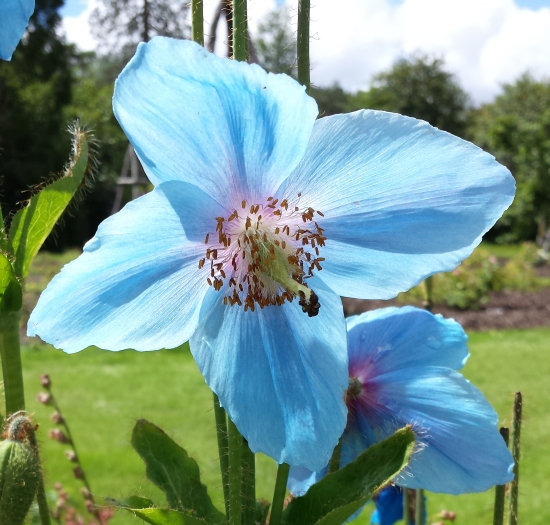Himalayan Blue Poppy
(Meconopsis baileyi)
Himalayan Blue Poppy (Meconopsis baileyi)
/
/

DeFacto
CC BY-SA 4.0
Image By:
DeFacto
Recorded By:
Copyright:
CC BY-SA 4.0
Copyright Notice:
Photo by: DeFacto | License Type: CC BY-SA 4.0 | License URL: https://creativecommons.org/licenses/by-sa/4.0 | Uploader: DeFacto | Publisher: Wikimedia Commons | Title: Himalayan_blue_poppy_in_a_Scottish_garden.jpg | Notes: User created page with UploadWizard |




Estimated Native Range
Summary
Meconopsis baileyi, commonly known as Himalayan Blue Poppy, is a deciduous perennial herb originally found in the moist alpine meadows and shady stream banks of the Himalayas, including Tibet and neighboring regions. It typically grows to a height of 3-4 feet (0.9-1.2 meters) and a width of 1-2 feet (0.3-0.6 meters). The plant is renowned for its captivating, large, sky-blue to purplish flowers that bloom in late spring to early summer, creating a spectacular display. The foliage is a soft green, providing a pleasant backdrop for the blooms.
The Himalayan Blue Poppy is valued for its unique and vibrant blue flowers, which are a rarity in the floral world, making it a prized specimen in woodland gardens and shaded borders. It requires a cool, moist environment and benefits from being planted in a location that mimics its native habitat, such as a shaded area with cool, moist soil that is rich in organic matter. While it can be a challenge to grow, success is more likely in regions with cool summers. It is not drought-tolerant and needs consistent moisture, but it is important to avoid waterlogged conditions. Gardeners should be aware that it may be short-lived and can sometimes behave as a biennial. Additionally, it does not tolerate hot, dry conditions well, and it can be susceptible to slugs and snails.CC BY-SA 4.0
The Himalayan Blue Poppy is valued for its unique and vibrant blue flowers, which are a rarity in the floral world, making it a prized specimen in woodland gardens and shaded borders. It requires a cool, moist environment and benefits from being planted in a location that mimics its native habitat, such as a shaded area with cool, moist soil that is rich in organic matter. While it can be a challenge to grow, success is more likely in regions with cool summers. It is not drought-tolerant and needs consistent moisture, but it is important to avoid waterlogged conditions. Gardeners should be aware that it may be short-lived and can sometimes behave as a biennial. Additionally, it does not tolerate hot, dry conditions well, and it can be susceptible to slugs and snails.CC BY-SA 4.0
Plant Description
- Plant Type: Herb
- Height: 3-4 feet
- Width: 1-2 feet
- Growth Rate: Moderate
- Flower Color: Blue, Purple
- Flowering Season: Spring, Summer
- Leaf Retention: Deciduous
Growth Requirements
- Sun: Part Shade
- Water: Medium
- Drainage: Slow, Medium
Common Uses
Bee Garden, Showy Flowers
Natural Habitat
Moist alpine meadows and shady stream banks of the Himalayas
Other Names
Common Names: Himalayan Poppy, Welsh Poppy
Scientific Names: , Meconopsis baileyi, Meconopsis betonicifolia var. baileyi,
GBIF Accepted Name: Meconopsis baileyi Prain